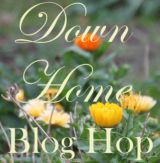Each year, in late winter, I used to pull out the seed catalogs and start making lists of what I wanted to plant in the garden in the spring. The costs of seeds would start to add up and with more and more people putting in backyard gardens each year, it was harder to get the varieties I wanted.
Hybrid vs. Heirloom
Saving seeds is a fairly simple process, although it can vary greatly from plant to plant. The first thing to remember is to start with the right type of seed when choosing a variety to save from. You want to make sure it isn't a hybrid or GMO seed. Hybrids are created by crossing two different parents to create a variety that will produce certain traits, give higher yields and are resistant to diseases, but they should be avoided for seed saving because they won't grow true to the original plant. Seeds from hybrids will either be sterile, incapable of producing any fruit, or they will revert back to one of the parents and won't give you a true variety. Hybrid varieties are usually labeled as "F1". Open-pollinated and heirloom seeds will produce "true-to-type" (produce plants like their parents) if they don't cross with similar varieties nearby. There are several places to buy organic, open-pollinated, heirloom seeds such as Baker Creek Seeds and Seed Savers Exchange.
The Process
For this example I am saving Basil seeds. The plants were grown from organic seed so I know they will produce true. I harvested most of the basil throughout the summer, but left some plants to produce flowers, which in turn produce the seed. Each flower produces four seeds, and as you can see from the photo, there are quite a few seeds per stalk. The flowers mature from the bottom to the top of each stalk, so when the flowers at the bottom start to turn brown they can be cut and dried. I cut the stalks when they are dry (not in early morning or after a rain), tie them together in bunches and hang them upside down inside brown paper bags. Some of the seeds will fall into the bag as the stalks dry, but to get the rest, rub each dried flower gently between your fingers and the seeds will fall out, or rub over a fine mesh. Once the seeds are separated I store them in paper envelopes in a cool dry place until next spring. A great resource on seed saving is Seed to Seed by Suzanne Ashworth.
Saving seed is a fairly simple process that will save you money next season. Just be sure to start with open-pollinated or heirloom seeds. Having a hand in preserving a certain variety and preserving our food supply will leave you with a good feeling.

































What a fantastic post. I love to find new gardening blogs and I am so happy that you linked up to our hop today. I look forward to reading more of your posts!~Melissa
ReplyDeleteThank you Melissa, and thanks for stopping by. ~Rob
DeleteThis post is perfectly timed - I was just getting ready to collect some seeds for the first time!
ReplyDeleteSaving seeds is incredibly easy. The amount of seed you can save from just one plant is amazing! ~Rob
DeleteGreat explanation, and I love your beautiful photos! I have Seed to Seed and completely agree that it is the absolute best guide to saving seed!
ReplyDeleteThank you and thanks for reading!
Delete~Rob